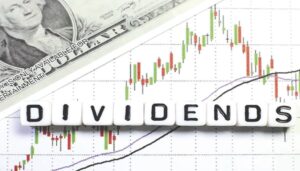Investing in the stock market can be a great way to build long term wealth. It can also be an income stream for some investors, depending on the kind of assets they invest in.

One way investors earn money is through buying stocks, holding them for an extended amount of time, and selling them once they have gone up in price (known as capital gains). But there is another way shareholders can receive a portion of a company’s profit when that company has a surplus of revenue, usually on a quarterly basis: dividends.
The first quarter of the year is always characterized by declaration of dividend payment as most publicly quoted companies publish their full year audited financial statements which is accompanied by corporate actions – announcement of dividend payment and bonuses.
Dividend investors take positions in companies that have a history of consistent payment of dividends with attractive dividend yield/return. This strategy is partly responsible for the gains recorded in the first quarter of the year. As dividend investing can be a great investment strategy, there are terms a potential or existing investor in the stock market must know as regards terminologies in dividend.

1. Declaration date
This is the date the board of directors announce the payment of a dividend. This includes the amount of dividend and the qualification, closure, payment and annual general meeting dates.
2. Qualification date
This is the day before the closure date (only work day is taken into consideration. To be qualified to receive a company’s dividend, investors must purchase the company’s stock on or before the qualification date. On the qualification date, registrars close the register of shareholders and only shareholders whose names appear on the register at the close of business on the qualification date will receive dividends.
3. Closure date
This is the date the stock is adjusted for dividends or bonuses.
4. Stock price adjustment
An adjustment is made to a company’s share price to reflect the dividend declared. The value of the dividend deducted from the stock price to reflect the dividend payment. For instance, if the closing price of the stock on the day before the closure date was N20 and the company declared a dividend of N2, the stock will open on the stock exchange on the closure date at N18 (that is N20-N2). It also means the stock will trade ex-div (excluding dividends).
5. Payment date
This is the date the company pays dividend to shareholders. The bank accounts of shareholders that have applied for e-dividend will be credited while dividend warrants are posted for others who are yet to apply for the e-dividend. One can discuss with his or her stockbroker to register for the e-dividend.
6. Dividend yield
Dividend yield is the dividend return based on the share price of the stock. It can also be based on the purchase price of the stock. If the stock price or purchase price is N10 per share and the company declares a dividend of N1 per share, the dividend yield is equal to N1 divided by N10, which gives 10 per cent.
7. Dividend per share
Dividend per share is the amount in value that shareholders get per share held. If you have 1,000 units of a particular stock and the dividend declared is N1 per share, this implies you will receive a total dividend of N1,000. This is subject to a 10 per cent withholding tax, that is net dividend received will be N900.
8. Cum-Div price
This is the stock price prior to the dividend mark down or prior to the closure date, that is stock price containing dividends.
9. Ex-Div price
This is the stock price after the dividend mark down or by the closure date, that is stock price excluding dividends. This also implies that you are not entitled to dividends if you buy the stock.
10. Annual General Meeting
This is the date the shareholders approve the dividend recommended by the Board of Directors. Most times in Nigeria, it coincides with the payment date but dividends cannot be paid before approval at the AGM.
But the question is how does a company pay a dividend? Firstly, a company generates profits and retained earnings, the management then decides to give an excess dividend, the board approves the planned dividend, the dividend date is then announced and the payment to shareholders starts.
According to Benjamin Graham, “the veteran investor will do better if he forgets about the stock market and pays attention to his dividend returns and to the operating results of his companies”.
Dividend stocks can be a key component of a well-balanced portfolio and can be beneficial for shareholders across the board. They can serve as both an additional source of income in the short-term and as a way for investors to grow their portfolios over time.
Sunnews

